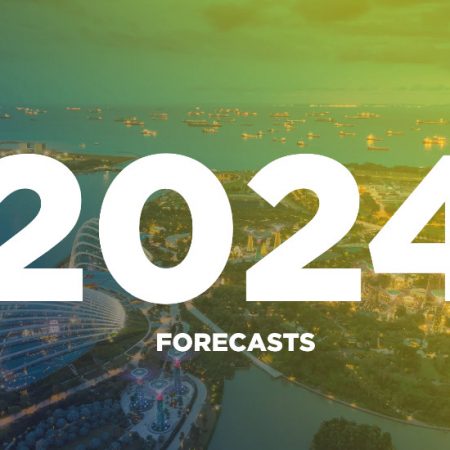Investment outlook
Commercial real estate investment is expected to gain momentum in the US in 2024, thanks to an economic soft landing . With the Consumer Price Index at 3.4% in December 2023, down from 6.5% the previous year, and the Federal Reserve set to make three rate cuts, totalling 75 basis points, in 2024, all signs point to a progressive uptick in investment activity.
The office sector is experiencing an unprecedented oversupply of space, although some markets and regions are faring better than others. Class A space that’s well located and well enough equipped to “earn the commute” of employees is in short supply and high demand. Additionally, there are billions of dollars of debt maturing in the near term – at a time when office valuations have plummeted and interest rates have rocketed.
Many landlords across the country have already found themselves unable to agree new terms with lenders and this trend is expected to continue throughout 2024. Consequently, investors are watching and waiting for distressed assets to emerge, rather than seeking value-add opportunities.
Generally speaking, the industrial sector faces fewer challenges. The primary demand driver – consumer spending – has stayed resilient despite headwinds. And while a massive amount of speculative development will be delivered in the first half of 2024, higher interest rates have translated into a construction slowdown that should prevent vacancy from drifting too high, other than in certain Sun Belt markets. The result is that investors continue to gravitate towards industrial property, attracted by its solid, long-term fundamentals and minimal distress. This should translate into increased investment activity as pricing stabilises.
Rents outlook
The office sector is in a challenging position, with occupancy yet to return to pre-pandemic levels and occupier demand tepid. This has left many markets strained and has led to record levels of availability. Rental growth is likely to flatten as the new supply pipeline moderates and landlords continue to focus on retaining and attracting tenants. Any rental growth will probably be at the very top end of the market, as occupiers’ flight to quality continues.
Cash concessions such as tenant improvement allowances and free rent have reached new peaks for office transactions over the past year. However, these may hit a ceiling as some lenders baulk at contributing additional capital for buildings with market values lower than the outstanding debt.
After three unprecedented years, the industrial market is normalising and key metrics are trending back to 2019 levels – which were very strong. With higher vacancy, rental growth is expected to slow to low single digits during the course of 2024, following three consecutive years of double-digit growth. Landlords have generally held the line on rents (with the notable exception of Southern California, which has seen rents come down after steep increases) but are now making concessions.
Yields outlook
Office valuations have dropped by double digits over the past year and are expected to continue to fall as cap rates remain high. The looming distress in the office sector means many investors will seek sharply discounted offerings.
As expectations for future interest rate hikes diminish, yields and pricing for industrial assets are settling at a new normal. Although this is a little below the 2022 peak, other property types have fallen further. And the substantial growth in rental rates means there is still considerable appreciation, even from two or three years ago.
Savills top picks for the US, 2024
- Stabilised office assets with long-term leased tenants who have superior credit in major gateway markets
- Prime warehouses in land-constrained markets
- Industrial assets with shorter lease terms and mark-to-market potential
- Distressed office properties with a possible conversion/redevelopment angle to non-office usage (multifamily, industrial, data centres etc.)
- Industrial development (new supply shortage possible by late 2024)


